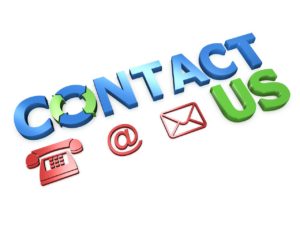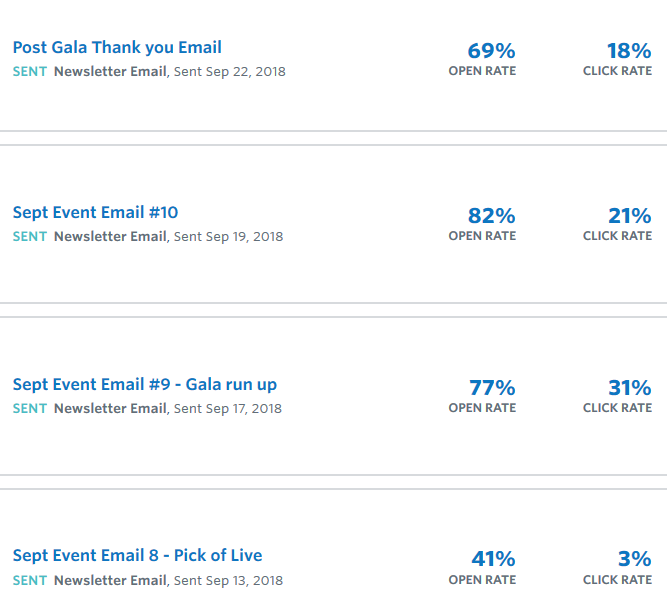Etched-In-Stone: The 5 Bedrock Email Fundraising Best Practices
Let No Email You Send Lack One of These (Even When Emailing Your Grandmother)
Most emails are too short.
Most emails also give the impression they were thrown together at the last minute.
The thing is, doing email fundraising and marketing the right way doesn’t take that much more time than throwing together sloppy last-minute gibberish.
I’ve come to care about this more and more because some people say email is dying (it’s not). Others say emails are too long (if anything, they should be longer).
The fact remains that email fundraising is your lowest cost and highest return form of fundraising. Think about it:
It takes months of planning, hundreds of hours, and lots of hands to put on a fundraising event. And how much does your event raise for all that labor? $100k? $200k? $500k? Maybe you’ve got a lot of wealthy donors and cross the $1 million mark.
And that’s all wonderful – because I love fundraising events too and they accomplish things no other form of fundraising can replicate. (Here’s a good starting place to learn about fundraising auctions)
But that’s a lot of work to earn a few hundred thousand dollars in net revenue.
On the contrary, one fundraising copywriter can send out just a few emails and bring in tens of thousands in donation revenue – even for small nonprofits. I’ve done it.
This is your chance master the five email fundraising best practices. And yes, there are only five. This IS an exhaustive list. The essential nature of these five email components holds true whether you’re a nonprofit, B2B business, B2C business, or even just a person writing to another person to complete a task.
These 5 email fundraising components are universal to all email marketing, anywhere, including Antarctica.
5 Email Fundraising Best Practices
Best Practice #1. Use Subject Lines Specially Designed for the Recipient
I’ve read in some places that emails are getting opened less and less frequently (this article reports a 19.4% average open rate for marketing emails)
While many possible culprits lurk behind this trend, your subject line remains your single greatest weapon to overcome it.
The number one emotion you want your subject line to trigger to get your emails opened is curiosity. There are others, but no matter how well known you are to your readers (and perhaps because you’re so well-known), you’ve got to intrigue them enough to open it every time.
Things you can do that elicit curiosity include:
- Ask questions the reader will want answered (NOT yes/no questions)
- Tease them with a statistic that they’ll want to know the story behind
- Use words that refer to something specific (e.g. this, here)
- Make it seem as if it’s sent only to them
Eliciting curiosity is just one strategy, of course. Get six more subject line strategies in this post.
Using proven methods can result in open rates like these:
Notice also how closely in time those emails were sent out. People who say sending too many emails is bad never get data like this.
And to be clear, we were using more than just curiosity. We were using several of the strategies in the post I referred you to about subject lines.
But the proof is in the pudding.
Best Practice #2: Opening Paragraph
Most people say the subject line is the most important part of your email, reasoning that if no one opens it, then no one will read it. True. But the subject is not the most important part of the email.
Why? Because getting someone to open an email means nothing if they don’t read it.
There are certain subject lines almost guaranteed to get high open rates, such as the oft-used “quick question”.
Great, but what if your email isn’t quick, and isn’t a question? Gimmicks and fads like that fail in the real world of email fundraising. We are telling stories, sharing updates, thanking people, calling to action, asking for volunteers. Using goofy subject lines like “quick question” just to get high open rates only ticks your readers off if the email doesn’t match the subject.
What really matters is what happens after they open the email, and your first paragraph is what determines that more than any other.
In just one paragraph, you MUST accomplish this goal:
Communicate to readers what this email is about, and why they should read it.
Fail at that, and you can get 100% open rates all you want, but it won’t mean anything.
So in your first paragraph (which should be short), make it crystal clear why you’re writing, and then provide an incentive to keep reading.
Best Practice #3: The Payoff
Whatever you’ve promised in your subject line and opening paragraph, you must deliver it.
Read that again.
The worst kinds of emails are ones that promise something but then fail to deliver.
Remember, curiosity and intrigue are powerful emotions. You’ve made them “want to know” something. Make sure you satisfy that desire, or they’ll get annoyed and feel manipulated.
This payoff could come in several forms:
- Your offer – what they get to do
- New learning
- A revelation or discovery about something
- A surprise
- A chance to participate in something
That’s just a sample to jog your thinking.
A lot of this comes down to the purpose of your email, and the action you want them to take. And that’s best practice #4.
Best Practice #4: Call to Action
This is your offer, the thing you want them to do. It can be a text link, a button, or both. With very rare exception, I always use both, because sometimes buttons don’t show up.
 You must give them something to do, because this allows you to measure your results. Open rates mean nothing in the long run if they don’t translate to revenue, or whatever goal you’ve set for your email.
You must give them something to do, because this allows you to measure your results. Open rates mean nothing in the long run if they don’t translate to revenue, or whatever goal you’ve set for your email.
For example, if you want event volunteers, and you send out an email asking for volunteers, you can measure how many people open the email if you want. But it’s the people who REPLY or SIGN UP to be volunteers that matter.
If you’re asking for money, which would you rather have: a 40% open rate and $2000 in donations, or a 20% open rate and $3000 in donations? Clearly, the second option, and you just need a better subject line to launch your revenue even higher.
Some possible offers and calls to action include:
- Sign up to be a volunteer
- Read this article
- Reply to this email
- Give
- Share this on Facebook
- Start your P2P campaign
- Register for the event
- Take our poll
- Fill out this survey
- Watch this video
- Listen to this podcast
Do not use vague calls to action like “learn more” and “click here.” Be specific. And even better, personalize them. Instead of “Reserve your seat,” make it “Reserve my seat.”
Best Practice #5: A Winning Structure
Lots of emails go off the rails here. They overload with graphics, use all kinds of inappropriate fonts, introduce formatting errors like centering all the text, bury the links, and make it nearly impossible to just read the thing.
You want people to READ your email.
That’s the goal. Please make it easy for them!
The simplest way to do that is with a straight text email, with no frills or goofy graphic design. When people read your email, they are more likely to click on your call to action. But to click on it, they need to be able to find it.
Here’s an email structure guide to keep you from going off the graphic design deep end:
- Short simple paragraphs of text, left justified (not centered)
- Use text links with clear call to action language in multiple places, not just the end
- Use subheadings if you’ve got more than one section
- Have a greeting, and put the sender’s name at the end of the email
- Include contact information (for credibility and because you’re a human, not a computer or a spammer)
- If you must include photos or graphics, surround them with text. Do not put essential messaging only in your graphics, because anyone with images disabled will not see them
Two Email Fundraising Components that Didn’t Make the List
You may have noticed two things missing. But I wanted to give true essentials. Essential means you MUST have it, every time.
I didn’t include graphics or photos, because not every email needs them. But sometimes, especially in fundraising, you need photos to tell your story more effectively. But as important as photos are, they aren’t always essential.
Also, I didn’t include a P.S., even though that too is very good email practice and you should use them often. But you don’t need a P.S. in every single email.
Many people, especially ones who scan quickly, reach the P.S. fast or even read it first, and then decide whether to act. So use a P.S. often, and put your main offer and call to action inside it.
How Do We Send Emails Out?
For nonprofits and businesses just getting started or fed up with their current email provider, I’m a big fan of Constant Contact, which is why I became one of their Solution Providers. It’s way easier to use than most of the others such as Mailchimp and the more complex systems.
Here’s an article giving 7 reasons why Constant Contact is better than Mailchimp
You can also try out Constant Contact for 60 days free using the button below.



